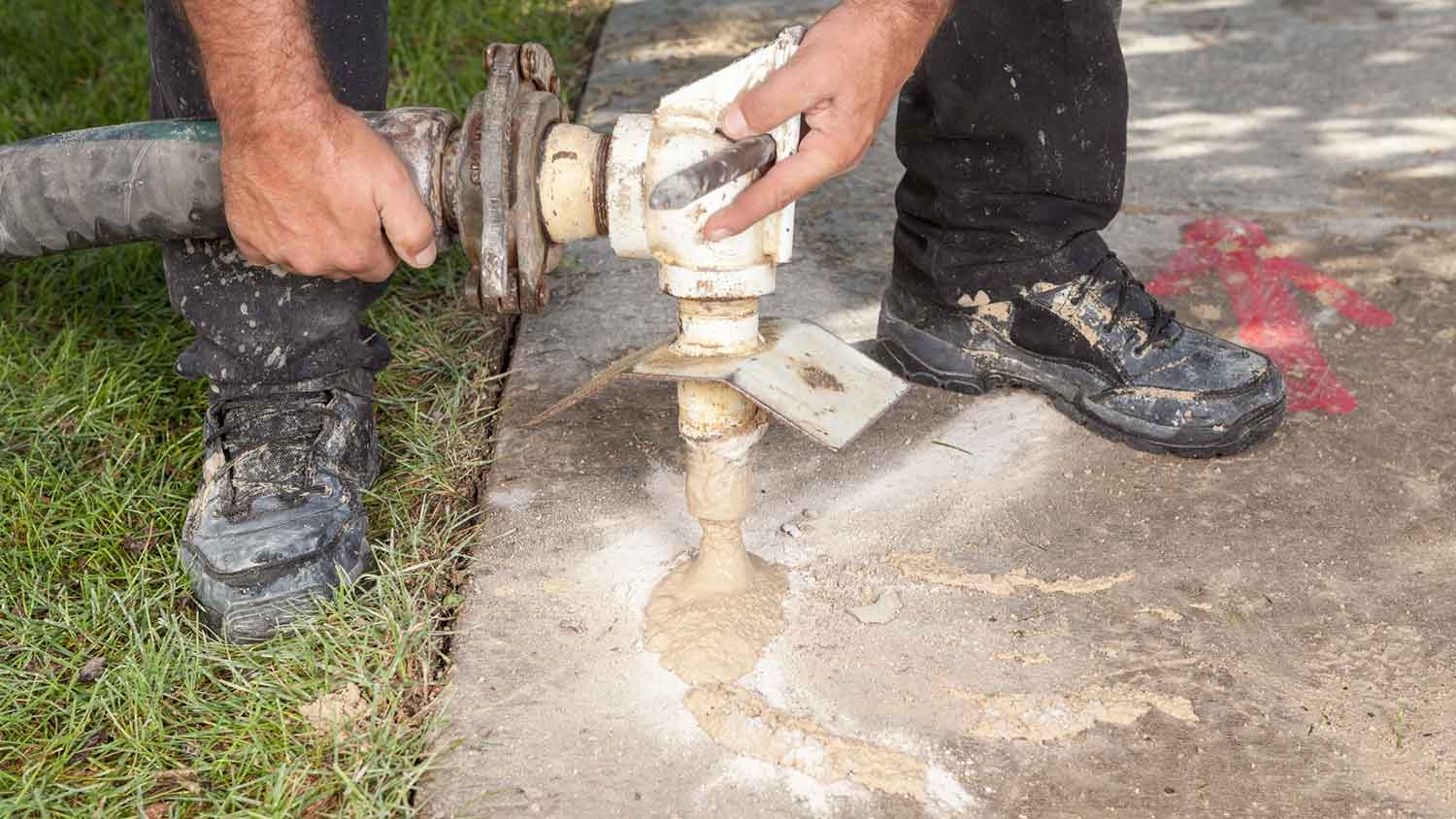
Don’t let sinking concrete capsize your budget. Learn about concrete leveling costs and the available methods to plan ahead for your project.
Get concrete answers to these questions from a concrete repair pro


Over time, concrete surfaces can settle and sink thanks to soil erosion, tree root expansion, or freeze/thaw cycles. The best way to address the issue is through concrete injection leveling or mudjacking. Before you hire a pro for this job, consider these essential questions.
Concrete injection leveling, or mudjacking, is when a pro drills an injection hole in the affected concrete area and pumps concrete slurry into the holes to lift the slab. Other leveling methods include sandjacking (where sand is injected instead of concrete slurry) and polyjacking (where the pro injects expanding polyurethane foam under the concrete). Mudjacking costs $3 to $6 per square foot, sandjacking costs $3 to $8 per square foot, and polyjacking costs $5 to $25 per square foot. Mudjacking is best for repairing concrete driveways, pool decks, and patios. Sandjacking is better suited for smaller areas like sidewalks and walkways, and polyjacking is the best option for foundation slabs.
The type and extent of the damage will affect the repair price. Concrete leveling costs $660 to $1,870, with most homeowners paying an average of $1,230. A concrete repair professional will assess the damage to your concrete and advise you on the best repair method, but it can help to give them an idea of the damage before requesting a quote.
The type and location of the concrete surface that needs leveling will affect the project's cost. Smaller areas, like concrete steps, a sidewalk, or a pool deck, generally cost less to level, while garage floors, driveways, and foundations cost a lot more. For example, leveling a concrete sidewalk costs $300 to $1,800, while leveling a concrete patio can cost up to $3,200. Foundation leveling is the most expensive, with an average cost range of $4,500 to $37,500, depending on the foundation size and the extent of the damage.
Ideally, you’ll complete your concrete leveling project in the spring, when the ground has thawed from the colder winter weather and the air temperature is stable and mild. Cold weather increases the curing time for concrete, while hot weather can prevent the concrete injected below the sinking surface from expanding fully. If you need the job done outside that time frame, ask a concrete mudjacking pro near you for advice on handling it properly.
Because temperature affects the ability of concrete to cure, you’ll need to consider the type of climate you live in. If you live in a warm or humid region, it might be best to complete your concrete injection leveling project during the winter. But if you live where winters last longer, you might need to push your project back to late spring or early summer.
From average costs to expert advice, get all the answers you need to get your job done.

Don’t let sinking concrete capsize your budget. Learn about concrete leveling costs and the available methods to plan ahead for your project.

Wondering about mudjacking costs? Discover prices, key cost factors, and tips to save on your concrete leveling project.
Learn about concrete leveling and how it can fix uneven surfaces, from sunken sidewalks to uneven driveways, and boost your home’s safety and curb appeal.

A driveway that’s too steep can be a major inconvenience. We’ve compiled some of the best steep driveway solutions in this comprehensive guide.

Leveling concrete slabs around your home is no small feat. Learn who to call to level your concrete slab and why they’re the right choice.

DIY mudjacking is an advanced task, but learning how to raise a concrete slab is great to know for many scenarios. Let's take a look at how to DIY mudjack.